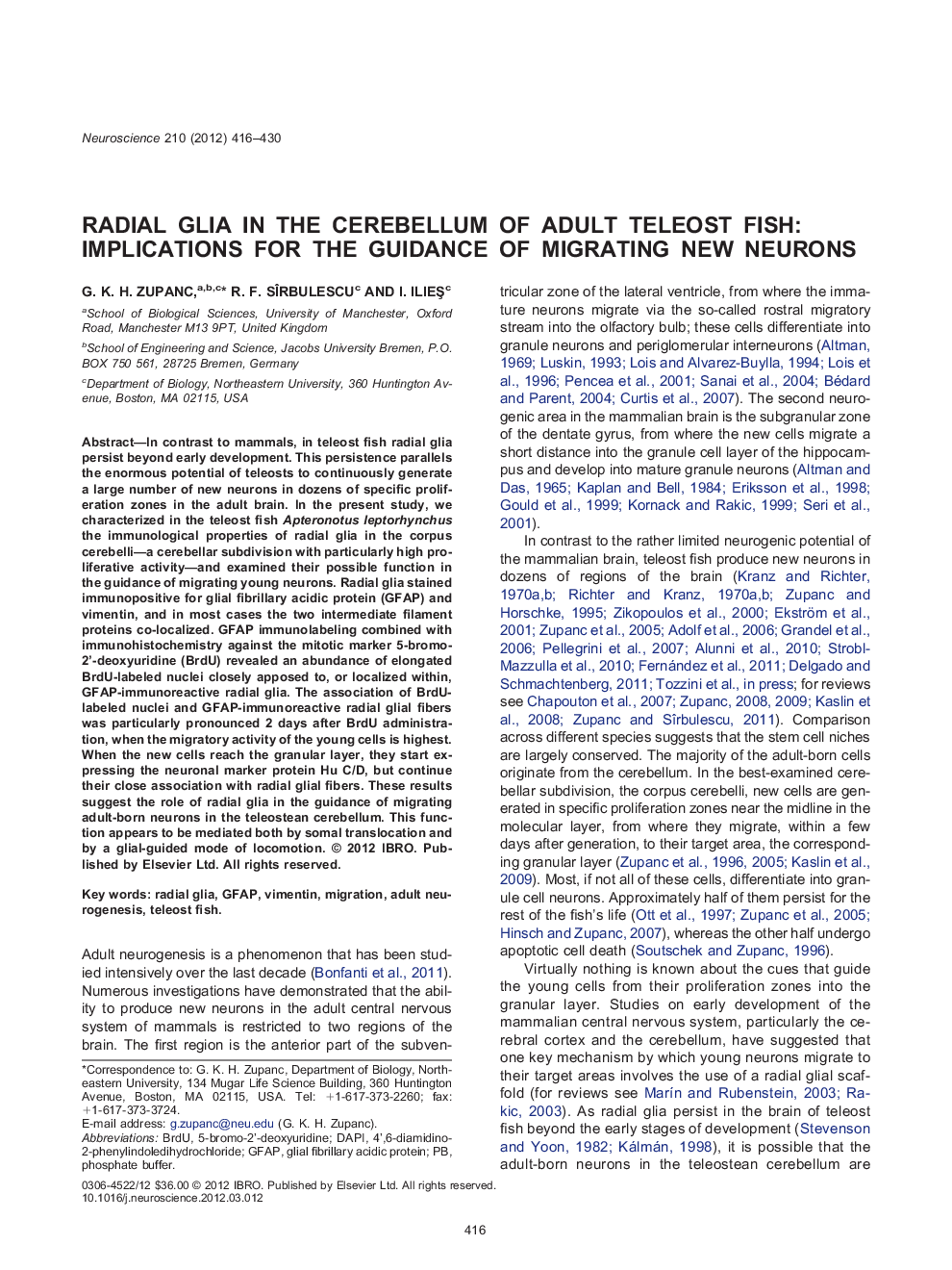| Article ID | Journal | Published Year | Pages | File Type |
|---|---|---|---|---|
| 4338384 | Neuroscience | 2012 | 15 Pages |
In contrast to mammals, in teleost fish radial glia persist beyond early development. This persistence parallels the enormous potential of teleosts to continuously generate a large number of new neurons in dozens of specific proliferation zones in the adult brain. In the present study, we characterized in the teleost fish Apteronotus leptorhynchus the immunological properties of radial glia in the corpus cerebelli—a cerebellar subdivision with particularly high proliferative activity—and examined their possible function in the guidance of migrating young neurons. Radial glia stained immunopositive for glial fibrillary acidic protein (GFAP) and vimentin, and in most cases the two intermediate filament proteins co-localized. GFAP immunolabeling combined with immunohistochemistry against the mitotic marker 5-bromo-2'-deoxyuridine (BrdU) revealed an abundance of elongated BrdU-labeled nuclei closely apposed to, or localized within, GFAP-immunoreactive radial glia. The association of BrdU-labeled nuclei and GFAP-immunoreactive radial glial fibers was particularly pronounced 2 days after BrdU administration, when the migratory activity of the young cells is highest. When the new cells reach the granular layer, they start expressing the neuronal marker protein Hu C/D, but continue their close association with radial glial fibers. These results suggest the role of radial glia in the guidance of migrating adult-born neurons in the teleostean cerebellum. This function appears to be mediated both by somal translocation and by a glial-guided mode of locomotion.
▶We characterize the distribution of radial glia in the cerebellum of adult teleost fish. ▶We examine the role of radial glia in the guidance of migrating adult-born neurons. ▶Radial glia (co-)express the intermediate filament proteins GFAP and vimentin. ▶Young cells, including neurons, are closely associated with radial glia during migration. ▶The putative guidance function of radial glia appears to be mediated by two cellular mechanisms.
